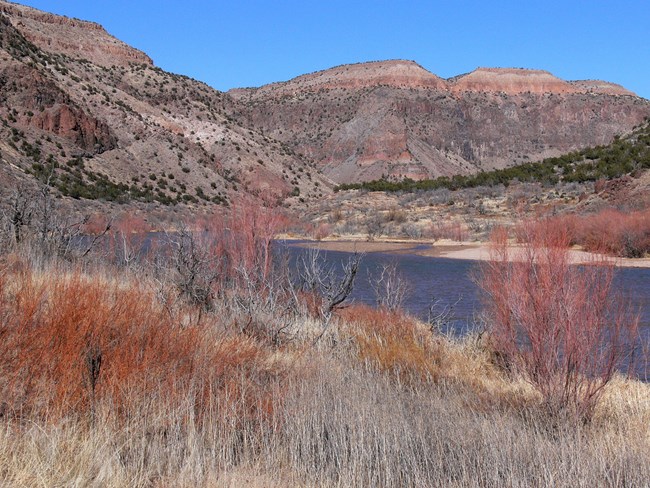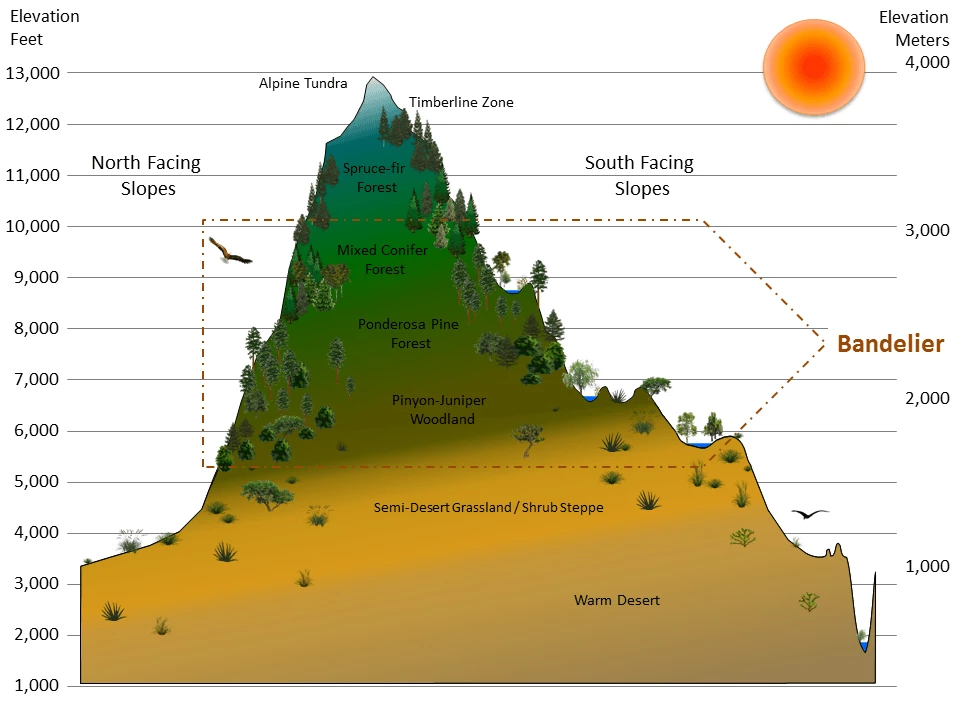
NPS / Sally King
Bandelier National Monument encompasses 33,675 acres along the eastern side of the Jemez Mountains in north-central New Mexico. It was designated as a national monument in 1916 to protect its Ancestral Puebloan resources. In 1976, 70% of the monument was designated as wilderness.
Much of the area was covered with volcanic ash, or Bandelier tuff, when an ancient volcano erupted about a million years ago. Most of the park overlaps the southern portion of the Parajito Plateau, a geologic formation of narrow mesas and deep canyons.
These dramatic features create different microclimates that support a diversity of life forms. Fifteen vegetation community types are found in the monument and include juniper grassland, pinyon-juniper woodland, ponderosa pine forest, mixed conifer forest, high-elevation meadows, and riparian communities. Bandelier NM supports 10 amphibian, 216 bird, 34 fish, 80 mammal, 36 reptile, 382 insects (of which more than 81 are butterflies), and 124 arachnid species.
The water resources of Bandelier include a number of perennial springs and streams. Bandelier NM possesses Class I, the highest level, air quality, which has legal protection under the Clean Air Act. All of these natural resources have been seriously affected by the frequency and extent of large-scale crown fires that have burned across the park since 2000.
Monitored Here
Species Lists
Select a Park:
Select a Species Category (optional):
Visit NPSpecies for more comprehensive information and advanced search capability. Have a suggestion or comment on this list? Let us know.
Life Zones
Bandelier NM ranges in elevation from 5,217 feet at the Rio Grande to more than 10,000 feet at the peak of Cerro Grande (1,590–3,050 m) and spans five life zones - from Semi-Desert Grassland/Shrub Steppe through Spruce-Fir Forest. The park experiences an average annual precipitation of 15 inches (382 mm).

Climate Summary Chart
Charts are an effective way to summarize and graphically represent climate variables. The following chart is based on the diagrams developed for vegetation studies by Walter and Lieth in 1967. Visit our climate page for more information.

Reports & Publications
Inventories are point-in-time surveys that help us learn about the resources in our parks. Information obtained through the Southern Colorado Plateau Network’s inventories of park resources helped to establish a base level of data, which has served as a starting point for our natural resource monitoring.
Source: NPS DataStore Saved Search 3515 (results presented are a subset). To search for additional information, visit the NPS DataStore.
Source: NPS DataStore Saved Search 3471 (results presented are a subset). To search for additional information, visit the NPS DataStore.
Source: NPS DataStore Saved Search 3280 (results presented are a subset). To search for additional information, visit the NPS DataStore.
Find additional documents on our Reports & Publications pages.
Links
University of Wyoming -
Rocky Mountain Region Digital Herbarium
Last updated: October 21, 2022
